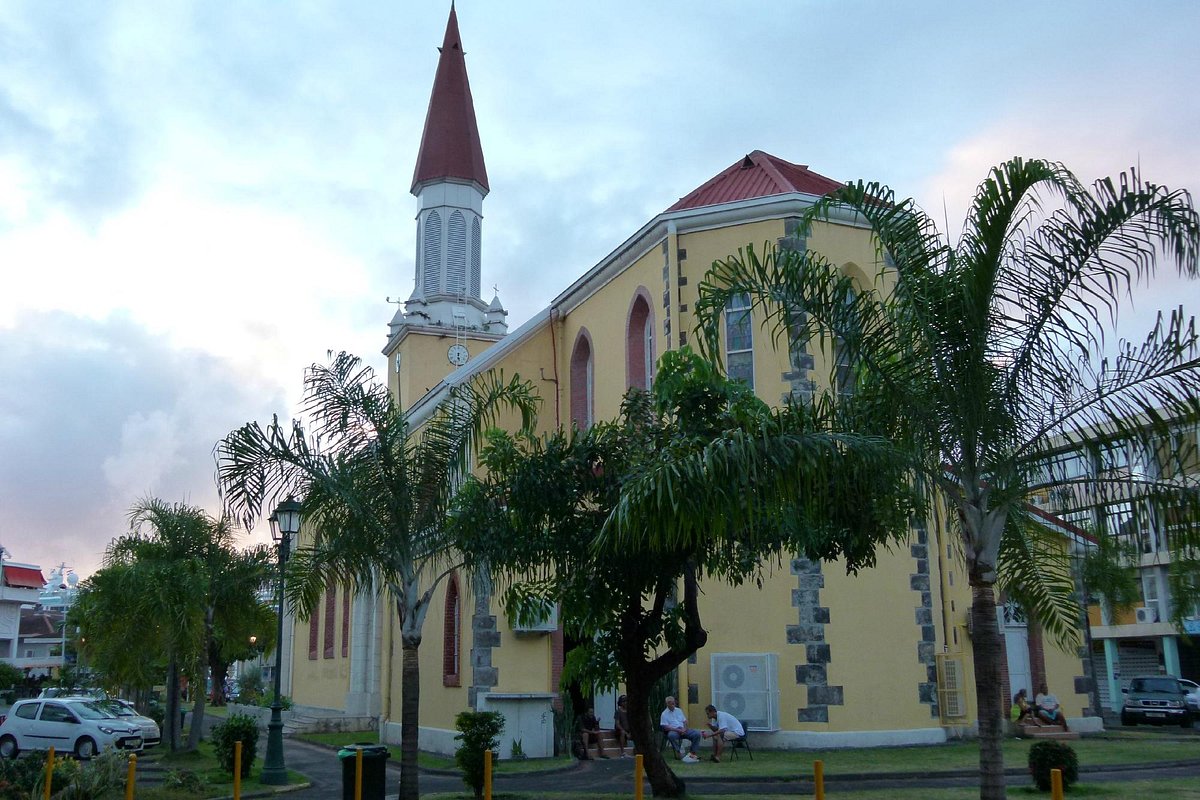Notre Dame de Papeete: A European Enclave in the Polynesian Paradise
Papeete, the vibrant capital of French Polynesia, is a tapestry woven from lush landscapes, turquoise waters, and rich Polynesian culture. Nestled amidst the swaying palm trees and bustling markets stands a striking landmark – the Cathédrale de Notre Dame de Papeete (Notre Dame Cathedral). This majestic structure, a splash of European influence amidst the Polynesian paradise, offers a glimpse into the island’s fascinating colonial past.
A Legacy of French Colonialism
The story of Notre Dame Cathedral begins in the mid-19th century, a period marked by French expansion into the Pacific Islands. In 1842, the Kingdom of Tahiti became a French protectorate, paving the way for a wave of missionaries and colonial influence. Recognizing the importance of religion in establishing a foothold, French authorities began construction of the cathedral in the 1850s. It was completed in 1875, becoming the oldest Catholic church in Tahiti and a symbol of French presence on the island.
Architectural Grandeur: A Blend of Styles
Notre Dame Cathedral is a testament to the architectural prowess of the colonial era. Designed in the neo-classical style, the cathedral boasts a symmetrical facade with clean lines and imposing columns. The white coral stone exterior gleams in the tropical sun, creating a stark contrast to the vibrant blue sky and lush greenery that surrounds it.
While the overall style is European, subtle Polynesian influences can be found throughout the cathedral. The hexagonal bell tower, a prominent feature, is topped with a pointed red spire, reminiscent of a Tahitian tapa cloth design. This unique blend of styles reflects the cultural and historical crossroads at which the cathedral was built.
Stepping Inside: A World of Tranquility
Crossing the threshold of Notre Dame Cathedral is like entering a haven of peace and tranquility. The cool air, a welcome respite from the tropical heat, and the hushed tones of visitors create a sense of reverence. The soaring high ceilings and spacious nave contribute to the feeling of grandeur.
A Feast for the Eyes: Stained Glass and Artistic Masterpieces
Sunlight streams through vibrant stained-glass windows, casting colorful patterns onto the cathedral floor. The windows depict biblical scenes and religious icons, adding a touch of artistic mastery to the sacred space.
Look closer, and you might find subtle details that weave Polynesian culture into the European tapestry. Some windows feature darker skin tones and traditional Tahitian clothing on biblical figures, reflecting the efforts to connect with the local population through familiar imagery.
Murals with a Message: The Stations of the Cross
The Stations of the Cross, a series of 14 depictions of Jesus’ journey to crucifixion, adorn the walls of the cathedral. Unlike traditional European renditions, these paintings incorporate elements of both Tahitian and Roman cultures. The figures wear a blend of European and Polynesian clothing, reflecting the cultural crossroads of French Polynesia. This unique portrayal serves as a reminder of the cathedral’s role in bridging the gap between two cultures.
A Revered Icon: The Carved Madonna and Child
One of the most captivating features of Notre Dame Cathedral is a life-size statue of the Madonna and Child. Carved from wood, the sculpture features a European Virgin Mary with a gentle expression. However, the Christ Child cradles a breadfruit instead of a traditional grape cluster. This subtle detail, a nod to a staple food in Polynesian culture, personalizes the statue and resonates with the local population.
Respectful Etiquette: A Place of Worship
Notre Dame Cathedral is an active place of worship for the Catholic community in Papeete. When visiting, it’s important to dress modestly and maintain a respectful demeanor. Be mindful of ongoing services and keep noise levels down to ensure a peaceful environment for worshippers.
Beyond Religious Significance: A Cultural Gem
Notre Dame Cathedral transcends its role as a place of worship. It stands as a testament to a bygone era, a time when European influence shaped the island’s landscape and culture. Today, the cathedral serves as a cultural hub, attracting visitors and locals alike who come to admire its beauty and learn about its fascinating history.
A Symbol of Harmony
Notre Dame Cathedral stands as a beautiful symbol of cultural harmony. The blend of European architecture and subtle Polynesian influences reflects the complex history of French Polynesia. It’s a reminder of the ways different cultures can coexist and even enrich each other.
A Lasting Impression: A Journey Through Time
Stepping out of Notre Dame Cathedral, you might feel transported back in time. The architecture and art within the walls offer a window into the island’s colonial past. However, the presence of locals seeking solace and the vibrant streets outside the cathedral doors serve as a reminder of the building’s enduring relevance in the present day.


0 Comment